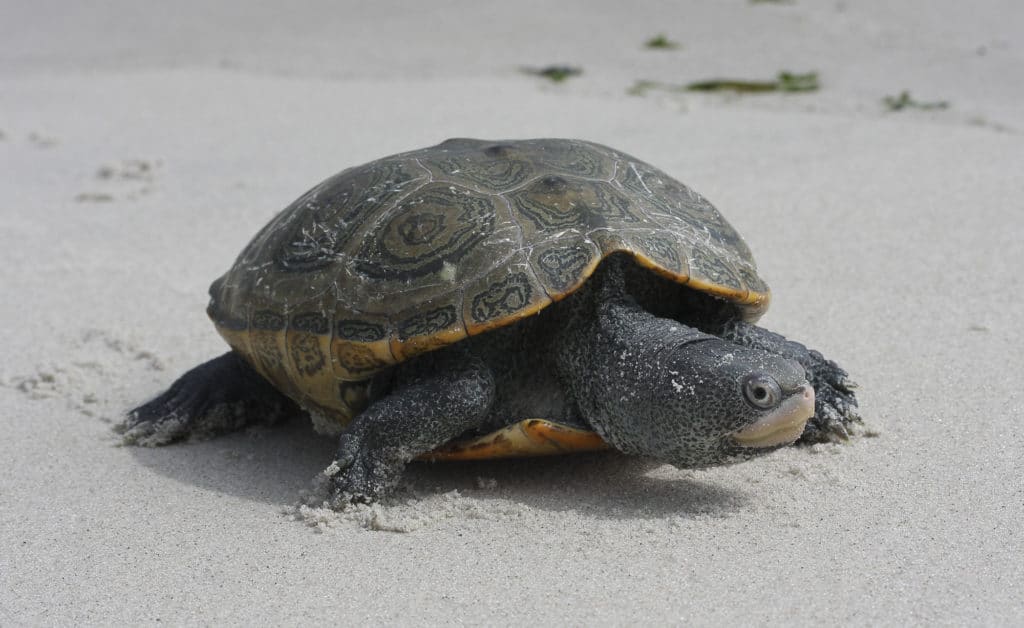Creature Feature

Doing Our Part to Protect Diamondback Terrapins
By Wayne Bierbaum
I moved to the Annapolis area in 1989. At that time, I enjoyed fishing and crabbing. I would occasionally take my kids to a community pier on a South River creek and do some crabbing with fish heads or chicken necks. Back then it was quite common to have several diamondback terrapins of various sizes trying to get a share of the bait.
My kids and I thought they were more fun than the crabs. Several times we saw really tiny turtles that obviously had hatched nearby.
Over the next several years, the creek changed. There was more boat traffic, including skiing and wake boarding. The sandy shoreline was replaced with large erosion-preventing granite boulders. The water quality changed with the rain and sun. Rain would cause cloudy sediment laden water and the sun and heat would cause slimy green algae blooms. My family still would occasionally see a terrapin.
I have not seen a terrapin in the creek since 2008 when I found and saved one trapped in the riprap.
Then a ban on commercial harvesting of terrapins passed in 2007. Just before it went into effect, professional fishermen placed nets at high tide across openings to submerged mudflats. As the tide went out, the fish and turtles trying to go out, too, were caught. At the time, live terrapins were being shipped to Japan as a delicacy.
When European settlers arrived in the Chesapeake Bay, diamondback terrapins were extremely common. They cooked them in their shells on the coals, and years later they were the main ingredient in a popular soup, nearly wiping out their species. Overharvesting, loss of nesting areas, and water degradation have all contributed to the crash in their population.
Even though I think that there is little hope that the turtles will return to my local creek, there is restorative action taking place. Living shorelines have been created as the alternative to continuous riprap. Living shorelines have wave barriers (even riprap) in slightly deeper water with breaks in the barriers to allow animals access to the shore. Along the shore, native grasses are planted. At high tide, fish have access to the partially submerged grasses and so do turtles.
The greatest region of diamondback terrapin restoration is Poplar Island. Dredge fill removed from Chesapeake Bay shipping lanes have been used to build back the washed away island, but it is being done in an environmentally sensitive way. The fill is added when little bird or turtle nesting activity is present.
Since 2002, terrapin turtles have been nesting on the island and enjoying the lack of raccoons. Maryland Environmental Service has been facilitating wildlife research and reintroduction of terrapins to the waters around the island.
Each year about 800 newly hatched terrapins are collected from the island; about 200 of these tiny turtles are raised by children in Maryland schools through the MES Terrapin Program. Turtles reared in warm water aquariums can grow without being preyed upon and can grow larger than their siblings in the wild. This head start allows the hatchlings to grow to the size of a 2- to 3-year-old wild juvenile terrapin in just nine months.
After being nurtured over winter, the turtles are brought back to Poplar Island to be tagged and released in the spring. Students that raised them sometimes get to tag along to see their turtles released.
Terrapins have now spread out from Poplar Island toward Tilghman Island and along the Eastern Shore.
Hopefully, the turtles will continue to enlarge their territory and start nibbling on some South River chicken necks again.
